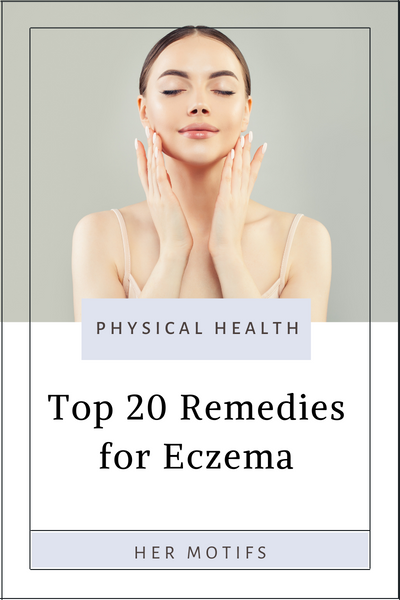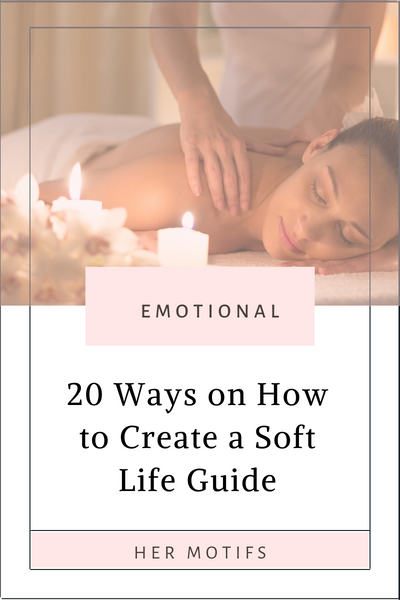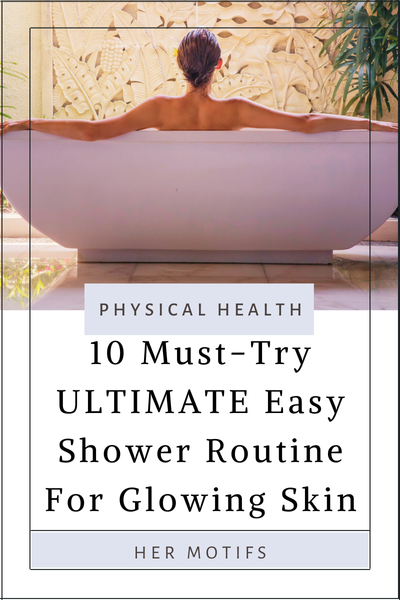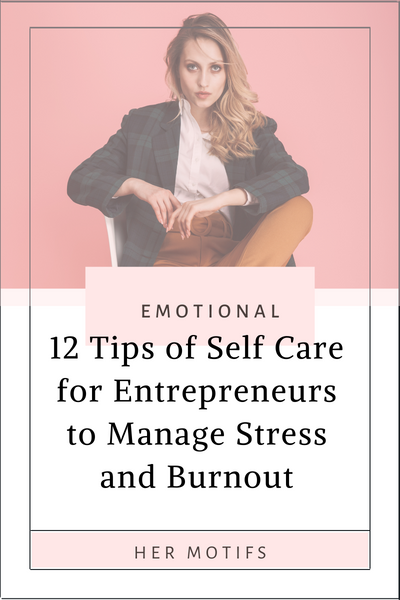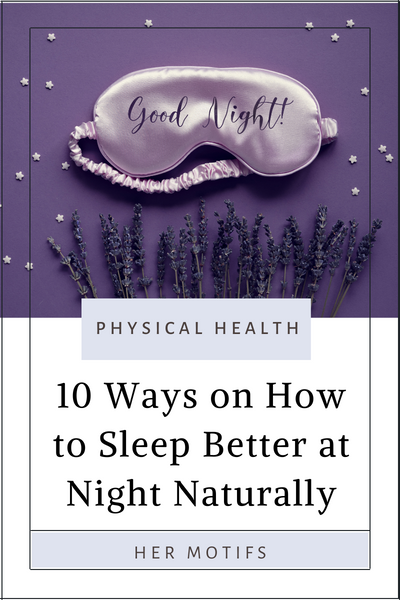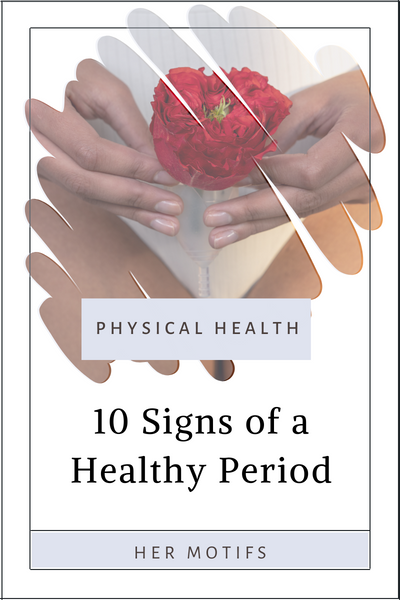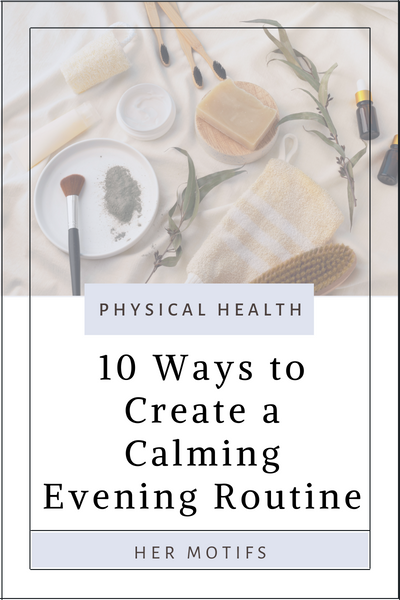Top 20 Remedies for Eczema
 Remedies for Eczema can range from simple lifestyle changes to topical treatments and natural remedies.
Remedies for Eczema can range from simple lifestyle changes to topical treatments and natural remedies.
It is a common condition that affects people of all ages, but it is more prevalent in children. Eczema can occur on any part of the body, but it most commonly affects the face, hands, elbows, and knees.
The exact cause of eczema is unknown, but it is believed to be a combination of genetic and environmental factors. People with eczema often have a weakened skin barrier, making their skin more susceptible to irritants, allergens, and infections.
Eczema symptoms can vary in severity and can include dryness, redness, itching, inflammation, and even oozing or crusting of the skin. Eczema, a common skin condition, can be a persistent and uncomfortable challenge for many. Its itchy, inflamed, and often painful symptoms can disrupt daily life and dampen one’s sense of well-being. While there is no one-size-fits-all solution for eczema, there exists a rich arsenal of remedies and strategies that can provide relief and help manage this condition effectively.
It is important to note that eczema is a complex condition, and its management may require a combination of approaches tailored to each individual’s needs. Whether you’ve been battling eczema for years or have recently encountered its symptoms, these remedies offer valuable insights and practical steps to soothe irritated skin, alleviate discomfort, and regain control over your skin health.
NB: PLEASE CONSULT A DOCTOR FOR MEDICAL DIAGNOSIS
.
Table of Contents
Best Eczema Relief Tools
There is no right or wrong way, the best method is the one that offers you relief. Below are some of our best tips and tools to relief discomfort.
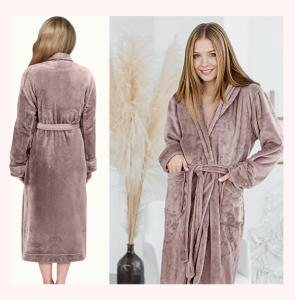 Plush Soft Long Robe
Plush Soft Long Robe
The most luxurious, softest, plush, comfortable robes ever
- 100% Polyester, tie closure, machine wash
- Perfect for sensitive for all skin conditions
- Super soft, plush, shawl collar fleece bathrobe
- Perfect for at home spa day, lounging and self care days
.
 Soft Bamboo Towels
Soft Bamboo Towels
Highly Absorbent and Suitable for Sensitive Skin
- High Quality viscose from Bamboo & Cotton for Softness
- Quick drying and odor resistant
- Produced for extra strength and durability
- Great for eczema and other sensitive skin conditions
.
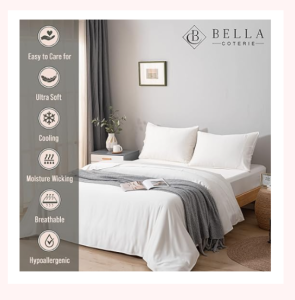 Soft Bamboo Sheets
Soft Bamboo Sheets
Organically Grown Bamboo Viscose for ultra softness
- Lightweight and silky, hypoallergenic and moisture-wicking, these sheets keep you cool in summer and warm in winter
- 400 thread count for softness and, 18″ extra deep pocket fitted sheet will fit
- Great for eczema and other sensitive skin conditions
.
1. Apply a Cold Compress
Use a clean, damp cloth or an ice pack wrapped in a thin towel to cool and numb the itchy area. Applying a cold compress is a common home remedy that can provide relief from itching and inflammation associated with eczema. Below are some tips:
- Cold Compress: A cold compress can be made by soaking a clean cloth in cold water or using ice packs wrapped in a thin towel. The cold temperature helps to numb the itchy sensation and reduce inflammation.
- Preparation: Start by wetting a clean cloth with cold water or placing ice packs in a thin towel. Make sure the compress is not too cold to avoid any discomfort or damage to the skin.
- Application: Gently apply the cold compress to the affected areas of the skin with eczema. Hold it against the skin for about 10-15 minutes or until the itching subsides. Avoid rubbing the compress on the skin as it may worsen irritation.
- Repeat as Needed: You can repeat the process several times a day or whenever you experience intense itching. However, be cautious not to apply the cold compress for an extended period as it may cause skin dryness or sensitivity.
Applying a cold compress helps to constrict blood vessels, reduce inflammation, and temporarily relieve itching. However, it’s important to note that this is a temporary solution and may not address the underlying causes of eczema. It is recommended to consult a healthcare professional or dermatologist for a proper diagnosis and comprehensive treatment plan for managing eczema.
.
2. Moisturize Regularly
Apply a thick moisturizer or emollient cream to keep the skin hydrated and reduce itching. Moisturizing regularly is an essential part of managing eczema as it helps to hydrate the skin, lock in moisture, and prevent dryness, which can exacerbate itching and irritation. Here’s more information about moisturizing regularly for eczema:
- Choose the Right Moisturizer: Opt for thick and emollient moisturizers that are specifically formulated for sensitive or eczema-prone skin. Look for ingredients like ceramides, hyaluronic acid, shea butter, or petroleum jelly, which help to seal in moisture and repair the skin’s barrier.
- Apply Immediately After Bathing: After taking a shower or bath, gently pat your skin dry with a towel and apply moisturizer immediately. This helps to trap the moisture from the water and prevent excessive drying of the skin.
- Moisturize Multiple Times a Day: It’s important to moisturize your skin multiple times throughout the day, especially if you have dry or eczema-prone skin. Aim to apply moisturizer at least twice daily, but you can do it more frequently if needed, such as after washing your hands or when you feel your skin getting dry.
- Gentle Application Technique: When applying moisturizer, use gentle and upward strokes to avoid rubbing or irritating the skin. Be sure to cover all areas of your body, paying extra attention to the eczema-affected areas.
Moisturizing regularly helps to replenish the skin’s natural moisture barrier, reduce itchiness, and promote overall skin health. Remember to choose fragrance-free and hypoallergenic moisturizers, and if you have any concerns or your eczema symptoms persist or worsen, it’s important to consult with a healthcare professional for proper evaluation and guidance.
.
3. Use a Humidifier
Keep the air in your home or workspace moist to prevent dryness, which can worsen itching. Using a humidifier can be beneficial for individuals with eczema as it helps to add moisture to the air, preventing the skin from becoming excessively dry. Below are reasons to use a humidifier:
- Optimal Humidity Levels: Keep the humidity level in your home between 40% and 50%. This range is generally considered optimal for maintaining a balance of moisture in the air without creating an environment that promotes mold or dust mite growth. Use a hygrometer to monitor the humidity levels in your home.
- Choose the Right Type of Humidifier: There are different types of humidifiers available, such as cool mist humidifiers and warm mist humidifiers. For eczema, it’s generally recommended to use cool mist humidifiers, as they disperse cool, moisture-laden mist into the air. This can help soothe dry, itchy skin without the risk of burns or scalds associated with warm mist humidifiers.
- Clean and Maintain Regularly: Proper cleaning and maintenance of your humidifier are essential to prevent the growth of mold, bacteria, or other contaminants. Follow the manufacturer’s instructions for cleaning and disinfecting the humidifier regularly. Use distilled water instead of tap water to reduce the buildup of minerals and potential impurities in the humidifier.
Using a humidifier can help to alleviate dryness and itchiness associated with eczema by increasing the moisture in the air. However, it’s important to note that excessive humidity can also promote the growth of mold or dust mites, which can trigger eczema flare-ups in some individuals. Therefore, maintaining optimal humidity levels and proper maintenance of the humidifier are key considerations for effective use.
.
4. Avoid Hot Showers or Baths
Opt for lukewarm water instead of hot water, as hot water can further dry out the skin and trigger itching. Avoiding hot showers or baths is important for individuals with eczema as hot water can strip the skin of its natural oils, leading to dryness and further irritation. Here are two tips to keep in mind:
- Use Lukewarm Water: When showering or bathing, opt for lukewarm water instead of hot water. Lukewarm water helps to retain some moisture in the skin without causing excessive drying. Avoid prolonged exposure to water, as spending too much time in the shower or bath can also contribute to dryness.
- Limit Shower/Bath Time: Keep your showers or baths short to minimize the time your skin is exposed to water. Ideally, aim for showers or baths that last no longer than 10-15 minutes. This can help prevent excessive moisture loss from the skin and reduce the chances of triggering an eczema flare-up.
Pat your skin dry gently with a soft towel after bathing and immediately apply a moisturizer to lock in moisture. If you experience severe eczema symptoms or have specific concerns, it’s best to consult with a dermatologist for personalized advice.
.
5. Wear Soft, Breathable Fabrics
Choose clothing made from natural fibers like cotton to reduce irritation and itching. Wearing soft, breathable fabrics can be beneficial for individuals with eczema as it helps reduce irritation and allows the skin to breathe. Here are two tips to consider:
- Choose Natural Fibers: Opt for clothing made from natural fibers such as cotton or bamboo. These materials are soft, lightweight, and breathable, allowing air to circulate around the skin and minimizing the risk of irritation. Avoid synthetic fabrics like polyester or nylon, as they can trap moisture and heat against the skin, potentially exacerbating eczema symptoms
- Wear Undergarments: Stay away from fabrics that are rough, scratchy, or irritating to the skin. This includes wool, certain types of synthetic materials, and fabrics with a tight weave. The best way to combat issues from scratchy fabrics is to wear undergarments, that are soft to the skin.
Opting for soft, breathable fabrics, you can help minimize skin irritation and discomfort associated with eczema.
.
6. Avoid Harsh Soaps and Detergents
Opt for mild, fragrance-free soaps and detergents that are gentle on the skin. Avoiding harsh soaps and detergents is essential for individuals with eczema as these products can strip the skin of its natural oils and exacerbate symptoms. Two tips to keep in mind:
- Use Mild, Fragrance-Free Cleansers: Opt for gentle, non-irritating cleansers that are specifically formulated for sensitive skin or labeled as suitable for eczema. Look for products that are fragrance-free and hypoallergenic to minimize the risk of triggering a reaction. Avoid using soaps or body washes that contain harsh chemicals, artificial fragrances, or dyes, as they can further irritate the skin.
- Choose Gentle Laundry Detergents: When washing your clothes, bedding, and towels, choose mild, fragrance-free laundry detergents. Harsh detergents can leave residue on fabrics, which may cause skin irritation when in contact with eczema-prone skin. Opt for detergents that are labeled as hypoallergenic or suitable for sensitive skin. Additionally, consider double-rinsing your laundry to ensure all detergent residue is thoroughly removed.
Avoiding harsh soaps and detergents, can help maintain the skin’s natural moisture barrier and prevent further irritation. It’s important to read product labels carefully and choose gentle, skin-friendly options that are less likely to aggravate eczema symptoms. Additionally, always moisturize your skin immediately after cleansing to lock in moisture and further protect the skin.
.
7. Take an Oatmeal Bath
Add colloidal oatmeal to a lukewarm bath and soak for 10-15 minutes to soothe itching and inflammation. Asking an oatmeal bath can be soothing and beneficial for individuals with eczema. Tips to keep in mind:
- Use Colloidal Oatmeal: Colloidal oatmeal is finely ground oatmeal that dissolves easily in water, creating a soothing and protective barrier on the skin. Look for products labeled as “colloidal oatmeal” or “oatmeal bath” in pharmacies or drugstores. Alternatively, you can grind plain, unflavored oatmeal into a fine powder using a blender or food processor and add it to your bathwater.
- Follow Proper Bathing Technique: When taking an oatmeal bath, make sure the water is lukewarm rather than hot, as hot water can strip the skin’s natural oils and exacerbate eczema symptoms. Fill the bathtub with enough water to cover the affected areas, and then sprinkle the colloidal oatmeal into the water. Stir the water with your hand to distribute the oatmeal evenly. Soak in the bath for about 15 to 20 minutes, gently patting your skin with the oatmeal-infused water. Afterward, rinse your body with clean water and gently pat your skin dry with a soft towel. Remember to apply a moisturizer immediately after drying to lock in moisture.
Oatmeal baths can help alleviate itching, reduce inflammation, and provide relief for eczema-prone skin. However, it’s important to note that individual responses may vary, and it’s always recommended to consult with a healthcare professional for personalized advice and treatment options for eczema.
.
8. Apply Aloe Vera Gel
The cooling and anti-inflammatory properties of Aloe Vera can help relieve itching and promote healing. Applying Aloe Vera gel can offer soothing relief for individuals with eczema. Here are two tips to consider when using Aloe Vera gel:
- Choose Pure Aloe Vera Gel: Look for pure, organic Aloe Vera gel without added fragrances, colors, or other ingredients that may irritate sensitive skin. You can find Aloe Vera gel in health food stores or pharmacies. Alternatively, you can extract fresh gel directly from an Aloe Vera plant by cutting open a leaf and scooping out the gel.
- Perform Patch Test and Monitor Skin Reaction: Before applying Aloe Vera gel to larger areas of your skin, it’s recommended to perform a patch test. Apply a small amount of gel to a small patch of skin, such as the inside of your wrist or forearm, and wait for 24 to 48 hours to observe any adverse reactions. If no redness, itching, or irritation occurs, it’s likely safe to use Aloe Vera gel on a larger area affected by eczema. However, if you experience any discomfort or worsening of symptoms, discontinue use and consult a healthcare professional.
When applying Aloe Vera gel, gently massage a thin layer onto the affected areas of your skin. Allow it to dry before covering the area with clothing or bandages. Aloe Vera gel can help hydrate and soothe inflamed skin, reduce itching, and promote healing. However, it’s important to note that individual responses to a Aloe Vera may vary, and it’s always recommended to seek advice from a healthcare professional for personalized eczema management.
.
9. Use Over-the-Counter Hydrocortisone Cream
Apply a low-strength hydrocortisone cream to reduce itching and inflammation, following the instructions on the package. Using over-the-counter hydrocortisone cream can help relieve the symptoms of eczema. Here are two tips to consider when using hydrocortisone cream:
- Choose the Right Strength: Hydrocortisone creams are available in different strengths, such as 0.5%, 1%, and 2%. For mild to moderate eczema symptoms, a lower-strength cream (0.5% or 1%) may be sufficient. However, for more severe symptoms, a higher-strength cream (2%) may be necessary. It’s important to read the product label and follow the instructions provided or consult with a healthcare professional for guidance on the appropriate strength to use.
- Use Sparingly and as Directed: When applying hydrocortisone cream, use it sparingly and only on the affected areas of the skin as directed. Gently massage a thin layer of the cream into the skin until it is absorbed. Avoid using it on large areas of the body or for an extended period without consulting a healthcare professional. Prolonged use of hydrocortisone creams can have side effects, such as thinning of the skin or skin discoloration, so it’s important to use it as directed and follow any recommendations from your healthcare provider.
It’s worth noting that hydrocortisone cream provides temporary relief for eczema symptoms and should not be used as a long-term solution. If your symptoms persist or worsen despite using over-the-counter creams, it’s advisable to seek medical advice from a healthcare professional for further evaluation and guidance on appropriate treatment options for your specific condition.
.
10. Take an Antihistamine
Over-the-counter antihistamine medications can help reduce itching, especially when taken at night. Taking an antihistamine can help relieve itching and discomfort associated with eczema. Tips to consider when using antihistamines for eczema:
- Choose Non-Drowsy Formulas: Antihistamines come in both drowsy and non-drowsy formulations. If you need relief from itching during the day without feeling drowsy, opt for non-drowsy antihistamines. These formulations contain ingredients like loratadine or cetirizine, which are less likely to cause drowsiness compared to older generation antihistamines like diphenhydramine. However, it’s important to note that individual responses to antihistamines may vary, so it’s advisable to try them out and assess their effects on your body.
- Follow Dosage Instructions: When using antihistamines, it’s crucial to follow the dosage instructions provided on the packaging or as directed by your healthcare professional. Take the recommended dose at the specified frequency to ensure optimal effectiveness and safety. If you have any questions or concerns about the appropriate dosage or potential interactions with other medications, consult with a healthcare professional.
Antihistamines primarily target the itchiness associated with eczema and may not treat the underlying cause of the condition. If your symptoms persist or worsen, it’s advisable to seek medical advice from a healthcare professional for further evaluation and guidance on appropriate treatment options for your specific condition.
.
11. Use Wet Wraps
Apply a damp layer of clean cloth or gauze to the affected area, followed by a dry layer, to provide relief and lock in moisture. Using wet wraps can be an effective strategy to alleviate eczema symptoms and promote healing. How to use wet wraps for eczema:
- Prepare the Wet Wraps Properly: Start by wetting a clean cotton cloth or bandage with lukewarm water. Squeeze out the excess water until the cloth is damp but not dripping. You can also add a mild emollient or moisturizer to the cloth to enhance hydration and soothe the skin. Make sure the wrap is not too tight to allow for proper circulation and avoid any discomfort.
- Apply Moisturizer Before Wrapping: Before applying the wet wraps, generously apply a moisturizer or emollient to the affected areas. This helps lock in moisture and creates a barrier to protect the skin. Choose a fragrance-free and hypoallergenic moisturizer specifically formulated for sensitive skin. After applying the moisturizer, gently wrap the damp cloth or bandage around the affected area and secure it in place.
It’s important to note that wet wraps should be used under the guidance of a healthcare professional, especially for severe or persistent eczema cases. They are typically recommended for short-term use to provide relief during flare-ups or as part of a comprehensive treatment plan. If you have any concerns or questions about using wet wraps, consult with a healthcare professional who can provide personalized advice and guidance based on your specific condition.
.
12. Try a Vinegar Compress
Dilute white vinegar with water, apply to a cotton ball, and gently dab the itchy skin to help alleviate itching. Using a vinegar compress can help soothe and relieve symptoms of eczema. Here are two tips to consider when using a vinegar compress:
- Dilute the Vinegar: Start by diluting the vinegar with water to reduce its acidity and prevent any potential skin irritation. Mix equal parts of water and vinegar, such as apple cider vinegar or white vinegar, in a clean container. This dilution helps maintain the skin’s pH balance and minimizes the risk of any adverse reactions.
- Apply the Compress: Soak a clean, soft cloth or cotton pad in the diluted vinegar solution. Gently wring out the excess liquid, ensuring the cloth is damp but not dripping. Apply the compress to the affected areas of eczema, allowing it to rest on the skin for 10-15 minutes. You can repeat this process several times a day or as needed to help alleviate itching, inflammation, and redness associated with eczema.
It’s worth noting that vinegar compresses may not work for everyone, and individual reactions can vary. If you experience any discomfort, irritation, or worsening of symptoms, discontinue use and consult with a healthcare professional. They can provide further guidance on whether vinegar compresses are suitable for your specific eczema condition and recommend alternative approaches or treatments if needed.
.
13. Use a Barrier Cream
Apply a thin layer of barrier cream, such as petroleum jelly or zinc oxide, to protect the skin and prevent itching. Using a barrier cream can help protect the skin and manage eczema symptoms. Here are two tips to consider when using a barrier cream for eczema:
- Choose a Suitable Barrier Cream: Look for a barrier cream specifically formulated for sensitive or eczema-prone skin. Opt for creams that contain gentle and nourishing ingredients like ceramides, shea butter, or natural oils. Avoid products that contain potential irritants such as fragrances, dyes, or harsh chemicals. Consult with a dermatologist or healthcare professional to find the best barrier cream for your specific needs.
- Apply the Barrier Cream Correctly: After bathing or showering, gently pat your skin dry with a soft towel. Then, take a small amount of the barrier cream and apply it to the affected areas of eczema. Massage the cream into the skin using gentle circular motions until it is fully absorbed. Pay extra attention to areas prone to dryness and irritation. It is recommended to apply the barrier cream at least twice a day or as directed by your healthcare professional.
While barrier creams can provide a protective layer and moisturization, they may not be sufficient to manage severe or chronic eczema. It is important to work with a healthcare professional who can evaluate your condition and recommend appropriate treatment options to address the underlying causes of your eczema and provide comprehensive care.
.
14. Avoid Scratching
Although it may be tempting, scratching can worsen itching and lead to skin damage. Instead, gently pat or tap the itchy area. Avoiding scratching is crucial to prevent further irritation and damage to the skin affected by eczema. Tips to help you avoid scratching:
- Keep Your Skin Moisturized: Dry skin can worsen itching and trigger the urge to scratch. Apply a moisturizer regularly to keep your skin hydrated and prevent dryness. Choose a moisturizer specifically formulated for sensitive or eczema-prone skin and apply it immediately after bathing or showering when your skin is still slightly damp. Moisturizing regularly can help alleviate itchiness and reduce the need to scratch.
Additionally, you can try wearing cotton gloves or keeping your fingernails short to minimize the impact of scratching on your skin.
.
15. Bathroom Environment
Trapping moisture in the bathroom by closing the door does not help with eczema. In fact, excessive moisture can worsen eczema symptoms. Eczema is a condition characterized by dry, itchy, and inflamed skin. It is important to maintain a balanced level of moisture in the air and on the skin to help manage eczema. Here’s why trapping moisture in the bathroom may not be beneficial:
- Increased Humidity: Closing the bathroom door can trap moisture in the room, leading to high humidity levels. High humidity can promote the growth of mold and mildew, which are common triggers for eczema flare-ups. It can also cause excessive sweating, making the skin more prone to irritation and itching.
- Moisture on the Skin: Eczema-prone skin tends to be dry, and excess moisture can disrupt the skin’s natural barrier function. Trapping moisture in the bathroom can result in increased moisture levels on the skin, which can lead to further dryness, irritation, and inflammation.
It’s crucial to find a balance between maintaining adequate moisture levels in the skin and avoiding excessive moisture that can exacerbate eczema symptoms
.
16. Towels, Bedding and Pajamas
When fighting eczema, it is important to maintain cleanliness and hygiene to help manage the condition. Here are some general recommendations for changing sheets and pajamas:
- Sheets: It is generally recommended to change your bedsheets at least once a week to remove any allergens, irritants, or buildup of dead skin cells. Clean sheets help create a clean and hygienic sleeping environment, reducing the risk of triggering eczema flare-ups.
- Pajamas: Changing your pajamas regularly is important, especially if you tend to sweat during the night or if your skin comes into contact with potential irritants. Opt for loose-fitting, breathable fabrics like cotton that allow air circulation and reduce friction on the skin. Changing your pajamas every 2-3 nights or as needed can help maintain cleanliness and minimize potential triggers for eczema.
- Towels: Towels that come into contact with your skin, including bath towels and hand towels, should be changed and washed regularly. Using a clean towel after bathing or washing your hands helps prevent the buildup of bacteria and potential irritants on the skin. Ideally, towels should be washed and dried after each use to maintain hygiene and minimize the risk of contamination
Note that the frequency of changing sheets, pajamas, and towels may vary depending on individual needs and preferences.
.
17. Use Fragrance Free Products
Avoid using perfumes, scented lotions, or other products with added fragrances that can irritate the skin. When dealing with eczema, using fragrance-free products can be beneficial as fragrances often contain chemicals that can irritate sensitive skin and trigger flare-ups. Using fragrance-free products tips:
- Choose fragrance-free skincare and personal care products: Look for products that are specifically labeled as fragrance-free or unscented. Avoid products that list “fragrance” or “parfum” in their ingredient list, as these may contain a mix of chemicals that can be irritating to eczema-prone skin. Opt for gentle cleansers, moisturizers, and other skincare products that are specifically formulated for sensitive skin.
- Check the labels of household and cleaning products: It’s not just personal care products that can contain fragrances. Many household and cleaning products, such as laundry detergents, fabric softeners, and cleaning sprays, also contain fragrances that can trigger eczema symptoms. Choose fragrance-free or hypoallergenic options for these products as well to minimize exposure to potential irritants.
Be careful and not use many products at once, as this can cause a nightmare when trying to isolate which product does not work for your skin.
.
18. Apply a Cold, Damp Towel
Place a damp towel in the refrigerator or freezer for a few minutes, then apply it to the itchy area for quick relief.
This has been one remedy that truly helped me with getting over or at least controlling eczema. Using a dry towel after a bath or shower losses body moisture faster, and using body oils or moisturizer in the shower tend to be messy and slippery. The best solution was to use a wet towel, this helped in still retaining body moisture and then applying body oils in a safer way. The best tip when it comes to dealing with eczema or any skin condition is to try find a solution that works for.
.
19. Drink Plenty of Water
Staying hydrated can help keep the skin moisturized and reduce dryness and itching. Drinking plenty of water is beneficial for overall skin health, including eczema management. Incorporating adequate water intake into your eczema care routine helps with:
- Hydrate throughout the day: Aim to drink water consistently throughout the day rather than consuming large amounts at once. Carry a reusable water bottle with you and sip on water regularly. This helps to maintain hydration levels and prevent dehydration, which can exacerbate eczema symptoms.
- Enhance water intake with hydrating foods: In addition to drinking water, you can increase your overall hydration by consuming foods with high water content. Include fruits and vegetables such as watermelon, cucumbers, oranges, strawberries, lettuce, and celery in your diet. These foods not only provide hydration but also supply essential nutrients for healthy skin
Staying hydrated helps to keep the skin moisturized and promotes its natural healing processes. There is nothing better than well balanced nutrition and water to combat eczema.
.
20. Seek Medical Advice
If your eczema itching persists or worsens, consult a healthcare professional who can provide further guidance and recommend appropriate treatment options.
- Consult a Doctor: This truly the BEST ADVICE ABOVE ALL. Everyone’s eczema is totally different and we all react differently. The best method is to contact a doctor and have them curate a plan on how to combat eczema. Regardless of of how many tips we list, the best source of information is going to be through your doctor.
- Journal Your Eczema Triggers and Flares: Secondly, keep a journal of how you body and skin reacts to different situations. The more you understand your reactions, the closer you are to a solution. Understanding your triggers and how your flares operate, mind be exactly where the solution is. Keep a list of all your interactions from foods, what you put on your skin what clothes you wear. This is all part of finding a solution for your eczema
The best advocate of your skin is you. Be mindful of what you eat and definitely how your skin reacts.
.
Eczema Useful Links
- Healthline – Eczema: Healthline’s eczema section provides articles and guides on different types of eczema, symptom management, and home remedies. They also offer tips for preventing flare-ups and maintaining healthy skin. Check out their eczema resources
- National Eczema Association: The official website of the National Eczema Association provides comprehensive resources, including information on causes, triggers, treatments, and management strategies for eczema. Visit their website
- WebMD – Eczema Health Center: WebMD’s Eczema Health Center provides articles, expert insights, and community discussions on eczema. You can find information on symptoms, triggers, treatment options, and lifestyle tips. Access their eczema section
- American Academy of Dermatology – Eczema: The American Academy of Dermatology (AAD) offers an extensive range of resources on various skin conditions, including eczema. Their eczema page covers diagnosis, treatment, and management techniques. For more helpful information about eczema
.
Conclusion
What works for one person may not work for another, so it’s important to find the remedies that suit you best. It’s important to remember that not all remedies may work for everyone, and it may take some trial and error to find the ones that work best for you.
Taking a holistic approach to managing eczema, including lifestyle modifications, proper skincare, and identifying and avoiding triggers, can contribute to long-term relief and improved quality of life.
As stated earlier it always a good idea to consult with a healthcare professional for personalized advice and treatment recommendations based on your specific condition and needs.
- 100 Valentine Lovers Questions - February 24, 2025
- 2025 New Year Growth Quotes - February 24, 2025
- 2025 Inspiring Self Love Quotes - February 24, 2025
